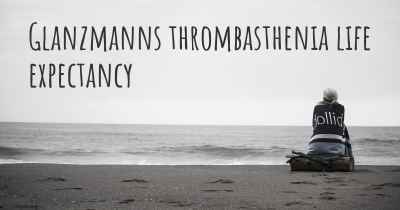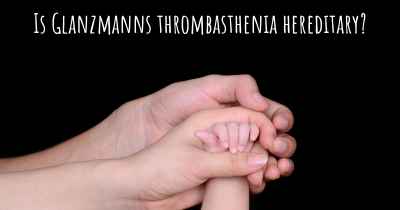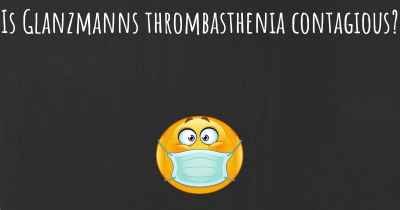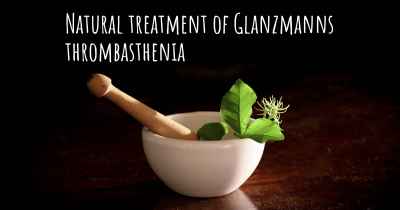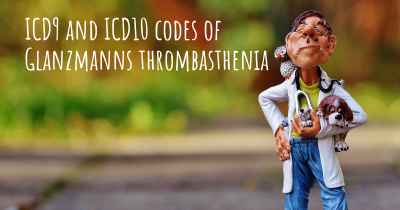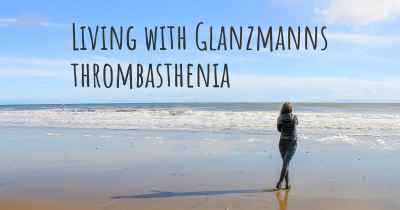What is the history of Glanzmanns thrombasthenia?
When was Glanzmanns thrombasthenia discovered? What is the story of this discovery? Was it coincidence or not?
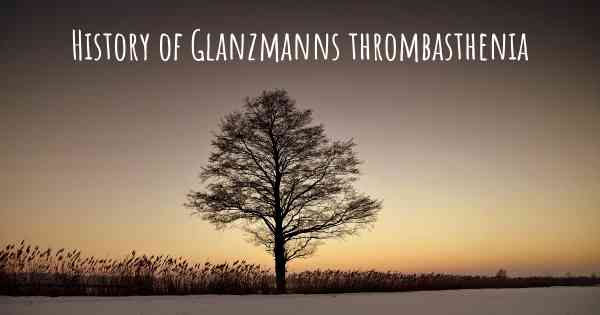
Glanzmann's thrombasthenia is a rare inherited bleeding disorder characterized by the inability of platelets to properly aggregate and form blood clots. It was first described by Dr. Eduard Glanzmann, a Swiss pediatrician, in 1918. Glanzmann's thrombasthenia is caused by a deficiency or dysfunction of the glycoprotein IIb/IIIa complex on the surface of platelets, which plays a crucial role in platelet aggregation.
The discovery of Glanzmann's thrombasthenia:
In 1918, Dr. Eduard Glanzmann encountered a 5-year-old girl with a severe bleeding disorder. Despite having normal platelet counts, the girl experienced prolonged bleeding after minor injuries and exhibited spontaneous bleeding episodes. Dr. Glanzmann conducted extensive investigations and observed that the girl's platelets failed to aggregate properly. He published his findings in a medical journal, describing this new bleeding disorder as "hereditary hemorrhagic thrombasthenia."
Further research and understanding:
Over the years, researchers continued to study Glanzmann's thrombasthenia to gain a deeper understanding of its underlying mechanisms. In the 1960s, it was discovered that platelet aggregation requires the interaction between two glycoproteins, namely glycoprotein IIb (integrin αIIb) and glycoprotein IIIa (integrin β3). These glycoproteins form a complex known as the glycoprotein IIb/IIIa complex, which acts as a receptor for fibrinogen and other adhesive proteins.
Genetic basis and inheritance:
Glanzmann's thrombasthenia is an autosomal recessive disorder, meaning that an affected individual must inherit two copies of the mutated gene (one from each parent) to develop the condition. The gene responsible for encoding the glycoprotein IIb/IIIa complex is called ITGA2B (integrin αIIb) or ITGB3 (integrin β3), depending on the specific subunit affected. Mutations in these genes lead to a deficiency or dysfunction of the glycoprotein IIb/IIIa complex, impairing platelet aggregation.
Clinical features and diagnosis:
Individuals with Glanzmann's thrombasthenia typically present with a variety of bleeding symptoms, including easy bruising, nosebleeds, gum bleeding, and prolonged bleeding after injuries or surgeries. Women may experience heavy or prolonged menstrual bleeding. The severity of symptoms can vary among affected individuals.
Diagnosis of Glanzmann's thrombasthenia involves a combination of clinical evaluation, platelet function tests, and genetic testing. Platelet aggregation studies using various agonists can reveal the impaired ability of platelets to aggregate. Genetic testing can identify specific mutations in the ITGA2B or ITGB3 genes, confirming the diagnosis.
Treatment and management:
Currently, there is no cure for Glanzmann's thrombasthenia. Treatment primarily focuses on managing bleeding episodes and preventing complications. Platelet transfusions are often required to control severe bleeding, but their effectiveness may be limited due to the presence of antiplatelet antibodies in some individuals.
Other treatment options include the use of antifibrinolytic agents, which help stabilize blood clots, and desmopressin, a medication that can temporarily improve platelet function. In some cases, recombinant activated factor VII (rFVIIa) may be used to promote clot formation.
Research and future prospects:
Ongoing research aims to develop novel therapies for Glanzmann's thrombasthenia. Gene therapy, which involves introducing functional copies of the mutated genes into the patient's cells, holds promise for potential long-term treatment. Additionally, advancements in understanding the glycoprotein IIb/IIIa complex and platelet biology may lead to the development of targeted therapies to enhance platelet function in affected individuals.
In conclusion, Glanzmann's thrombasthenia is a rare bleeding disorder first described by Dr. Eduard Glanzmann in 1918. It is caused by a deficiency or dysfunction of the glycoprotein IIb/IIIa complex on platelets, impairing their ability to aggregate and form blood clots. The disorder is inherited in an autosomal recessive manner and is characterized by various bleeding symptoms. While there is currently no cure, treatment focuses on managing bleeding episodes and preventing complications. Ongoing research offers hope for future advancements in the treatment of Glanzmann's thrombasthenia.
